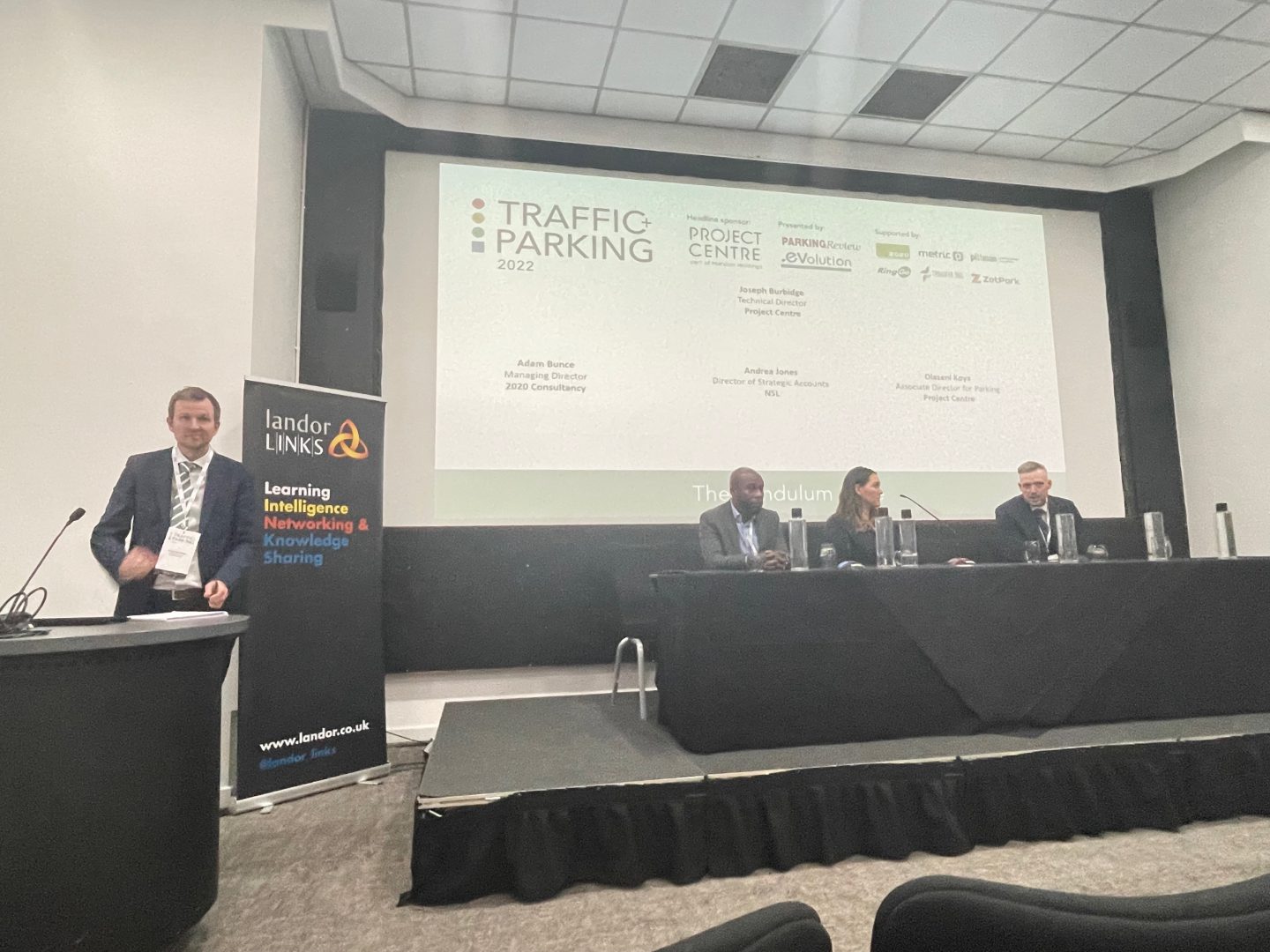Project Centre sponsored the Traffic + Parking Conference in Manchester, which was a fantastic opportunity to network and catch up on the latest news in the sector.
The conference covered some crucial themes for traffic and parking professionals.
Some of the discussions included…
- Moving traffic regulation and enforcement
- Creating better streets
- Enabling the new mobility
The event was well attended. Our team actively contributed to most of the sessions by chairing and/or presenting our work.

Moving forward together
Marston Holding’s Director of Environment, Nick Ruxton-Boyle, and Project Centre’s Associate Director Tina Glover both presented during this session, bringing in two different but integrated perspectives on how to transform our public space for a better mobility.
Nick Ruxton-Boyle – “People friendly streets”
Director of Environment, Nick Ruxton-Boyle, provided an analysis of the best practises for creating low-traffic neighbourhoods. Nick identified some of the main areas to investigate prior to the scheme’s development:
- Analysis of air quality across the area
- Understanding of parents and stakeholders’ behaviour
- Identifying barriers to people using sustainable ways of transport
By collecting the above data, expert engineers and transport planners should provide solutions to integrate long-term active travel plans. The objective is to leverage existing habits, getting communities and stakeholders to take on new ways of transportation.
Tina Glover – “Moving Traffic enforcement – where are we now?”
TMA made legislative changes to the traffic enforcement policy. From now, local authorities need to make an application to be designed as enforcement authority. The application can be long and there’s no assurance that it will be accepted. In her presentation, Tina summarised the best practices to be prepared for the transition:
- Set up a project board – for highways, parking, legal, finance, and traffic management
- Early engagement – information about the change in legislation
- Collaboration – involving the police, neighbourhood teams, parking enforcement teams, and transport authorities.
- Prioritise your sites based on set criteria that you can score using “non monetary” benefits
- Apply a consistent approach across regions
- Take the opportunity to validate your Traffic Regulation Orders
Better Streets
Technical Director for Parking, Joseph Burbidge, chaired the session discussing briefly about the ways we can create safer and healthier places for the communities. Associate Director for Parking, Olaseni Koya, provided a different perspective of the issue, talking about why and how mapping the kerbside can benefit local authorities.

Olaseni Koya – Mapping the kerb
Mapping the kerbside can shed light into crucial information for local authorities. Datas from mapping the kerbside can be observed to understand how the space is being used and how it can be optimised for the desired results. In his presentation, Ola goes through some of the main benefits of mapping the kerbside:
- Better accuracy of kerb side assets and restrictions
- Can reduce pollution by making information more accessible
- Allows a more efficient and flexible approach to kerbside management
- Intelligent parking solutions such as bookable loading bays
- Linking kerb space information to other solutions including air quality monitoring, traffic monitoring
Enabling the new mobility

Technical Director for Transport, Chris Durban, chaired the session, briefly discussing the latest innovations in the transportation sector. Our Electric Vehicles (EV) Lead Consultant, Kieran Taylor, went deeply into the importance of rolling out EV charging points across the UK.
Kieran Taylor – Electric avenues: rolling out EV charging in urban areas
The key to the implementation of EV charging points is to install the right charger in the right place.
From 2011 to 2021, the number of licensed vehicles in UK increased from 34m to 40m. The news is not extremely positive on this side, as we didn’t meet the targets. However, the forecast of EV uptake in the next years is looking promising. ICCT calculated that the EVs sales will increase of 50% by 2030. Local authorities should prepare themselves for this increase, quantifying and providing solutions to their EVs charging infrastructure gap.









